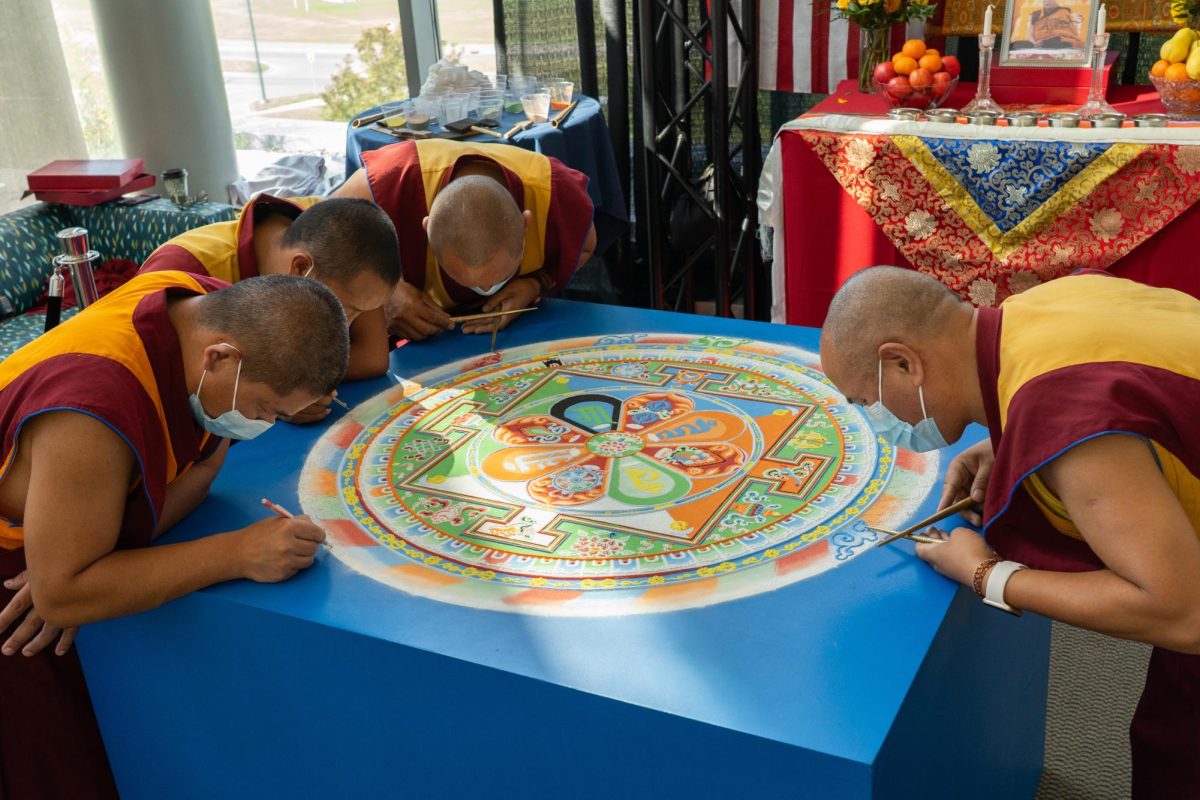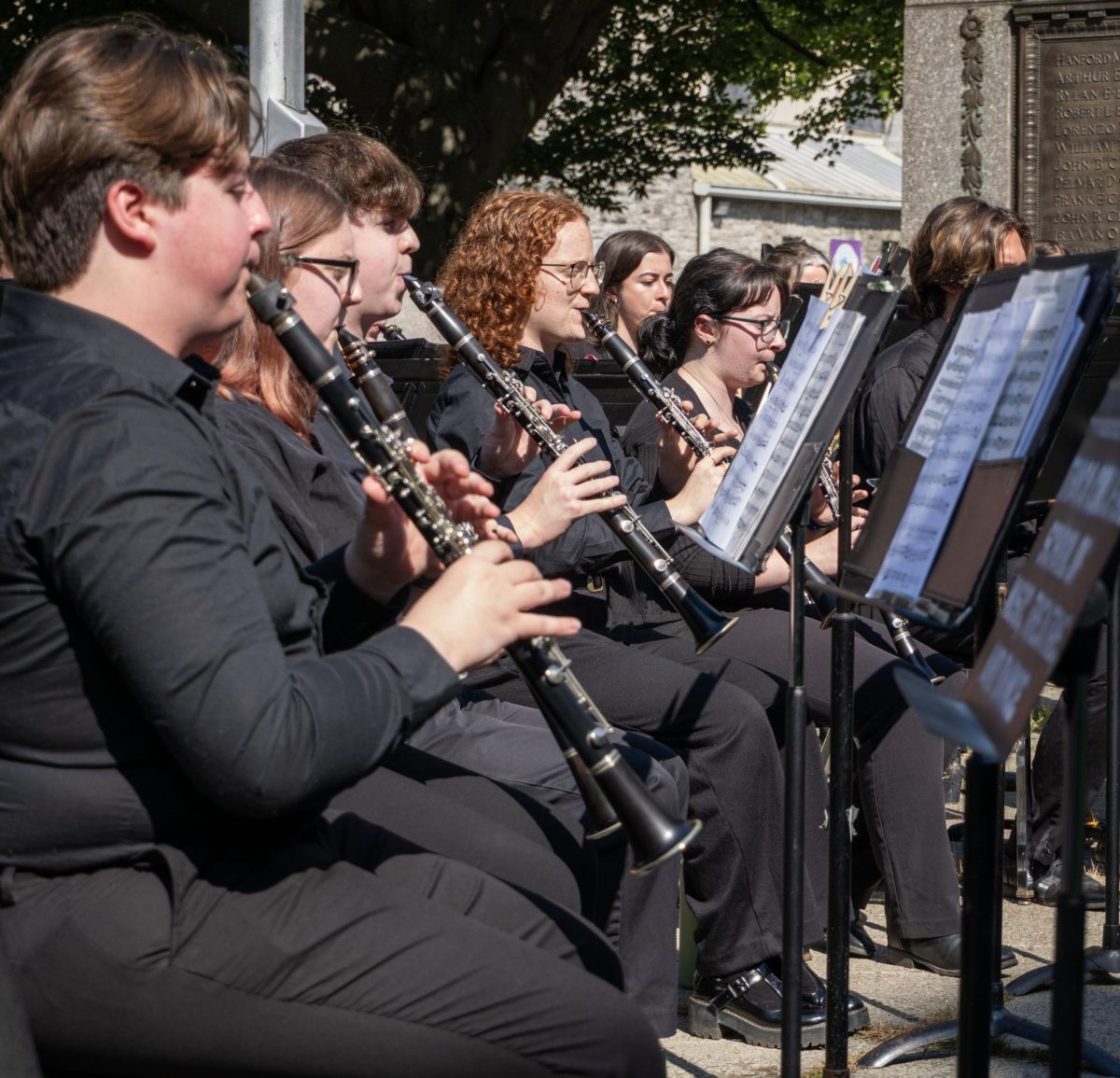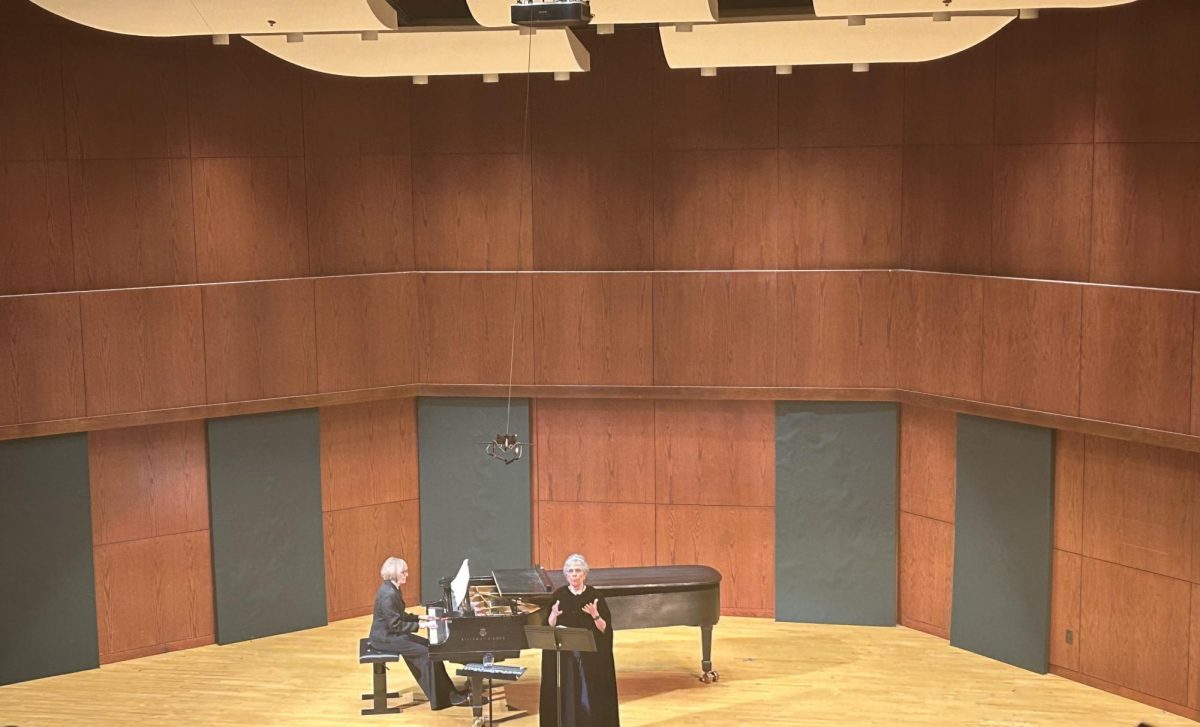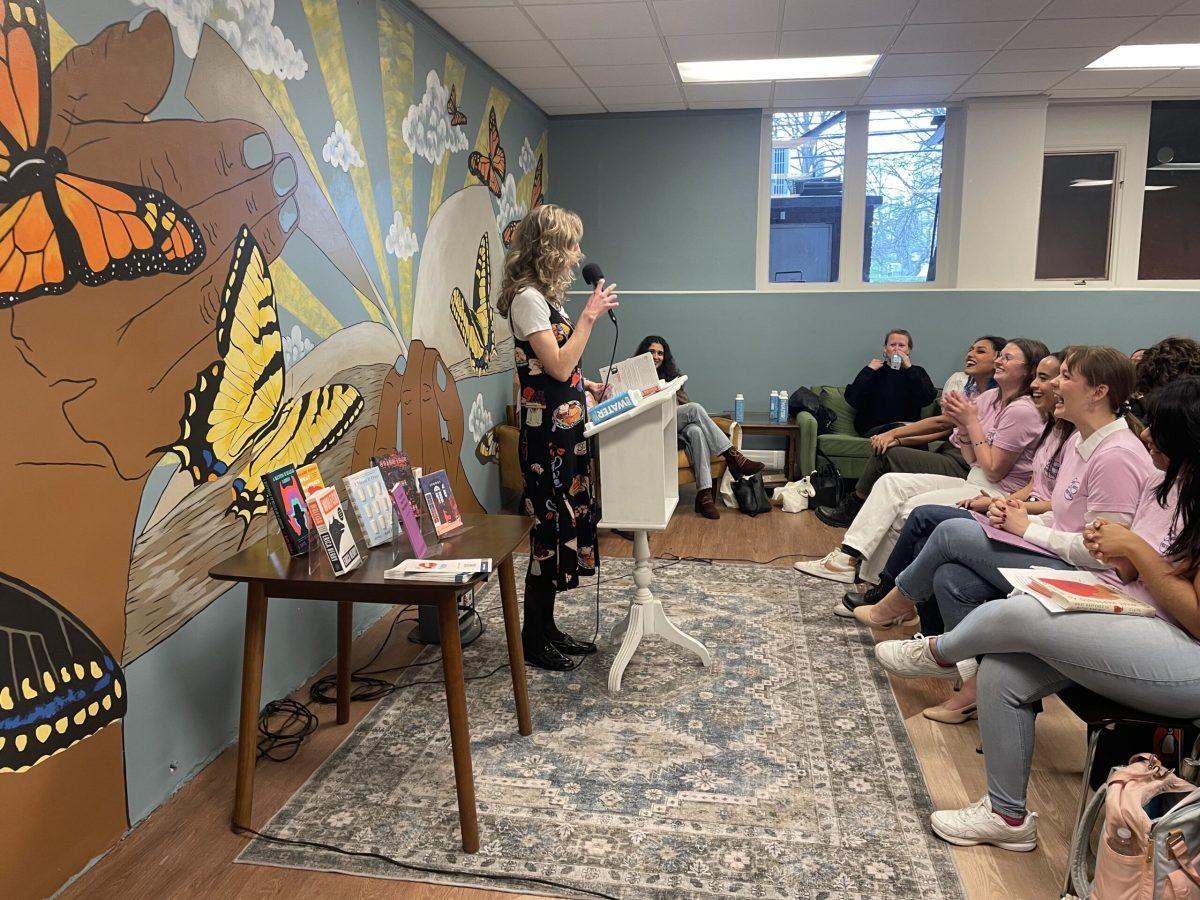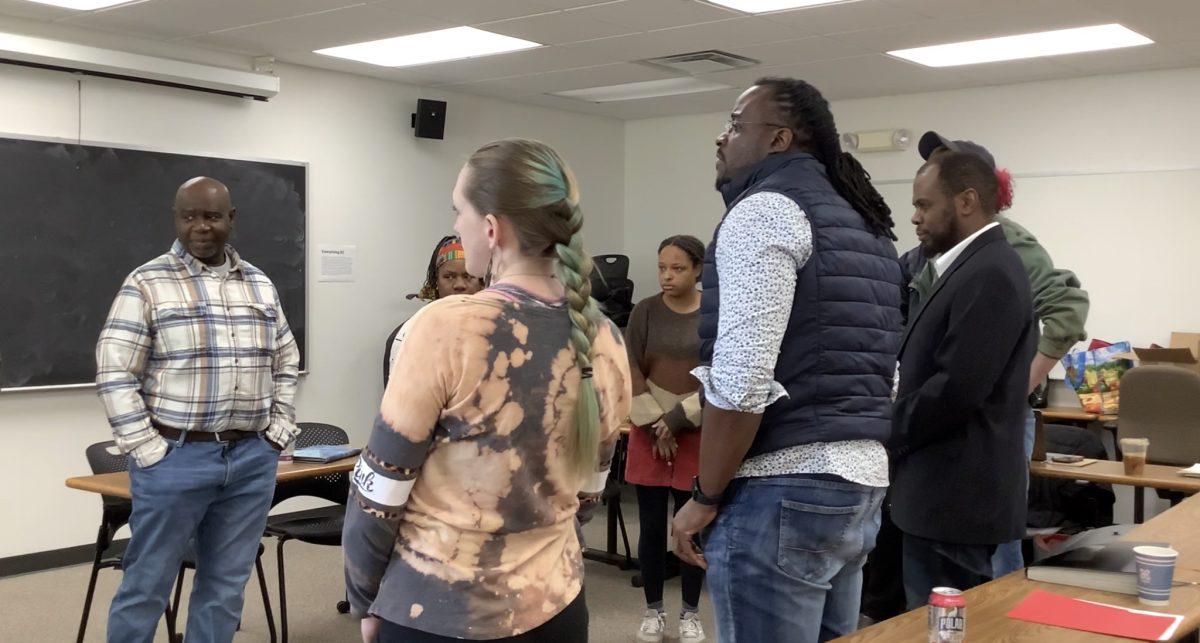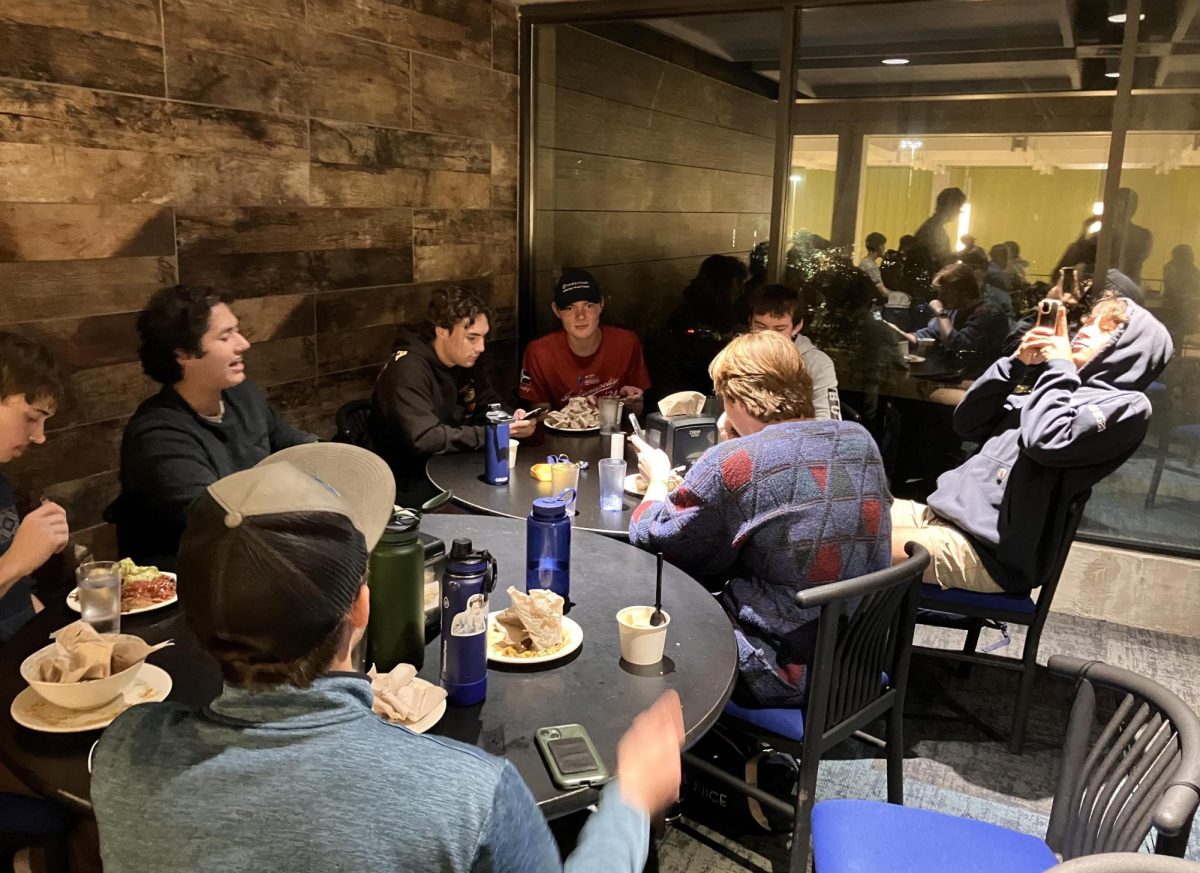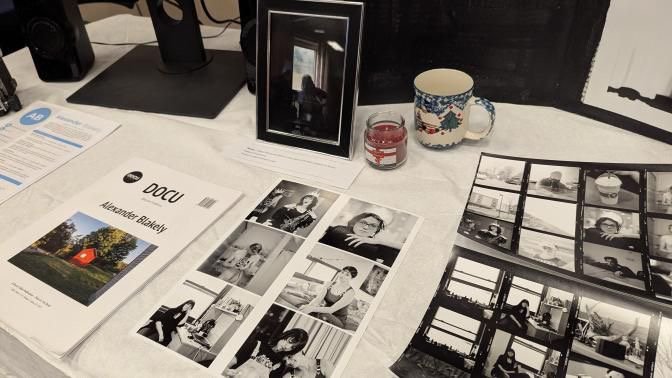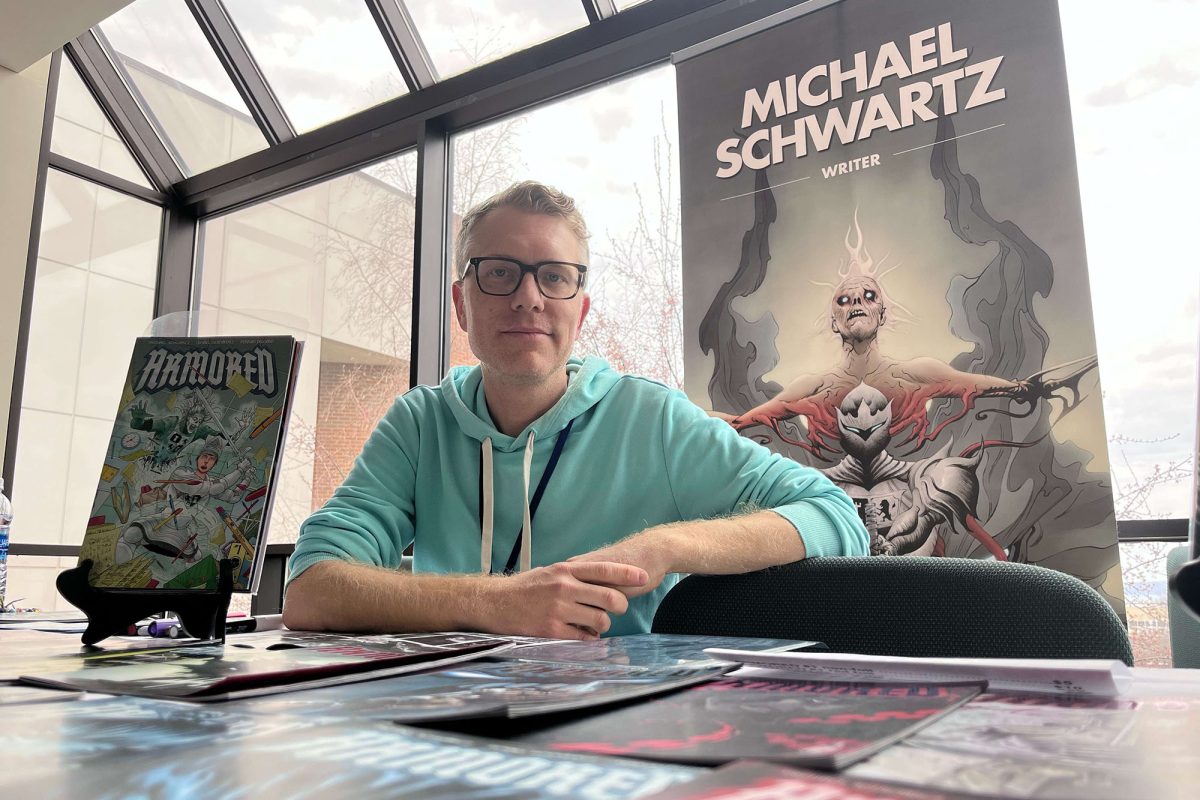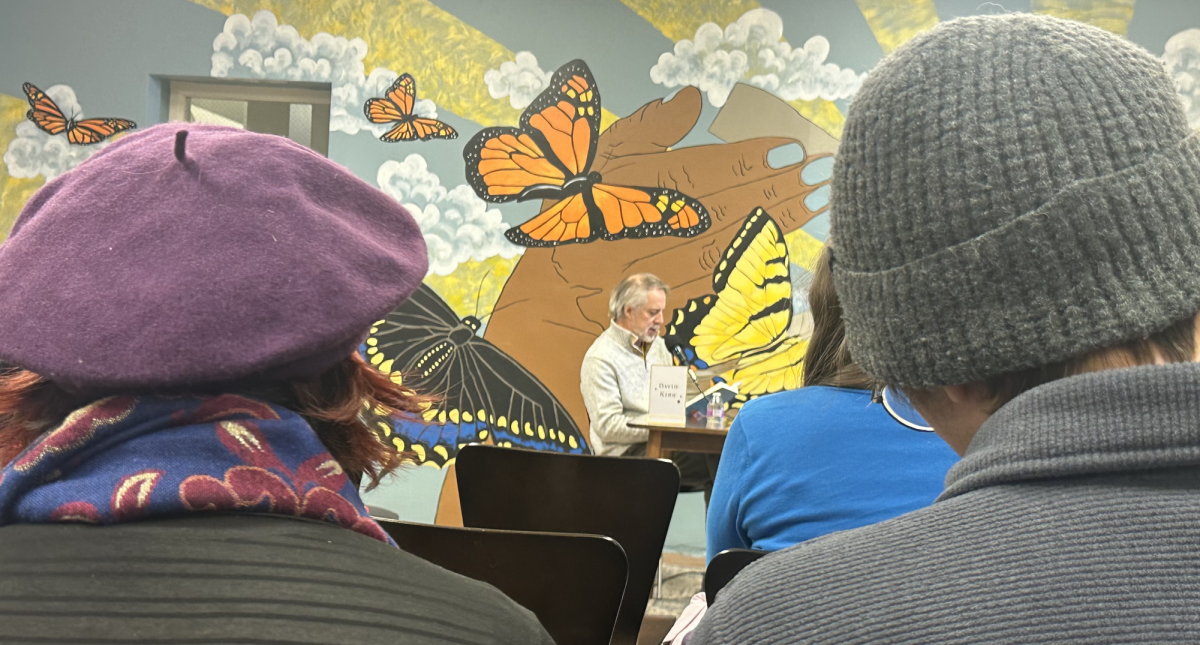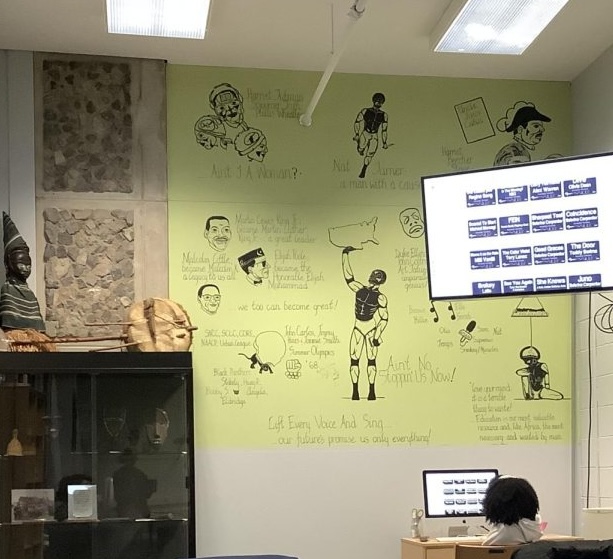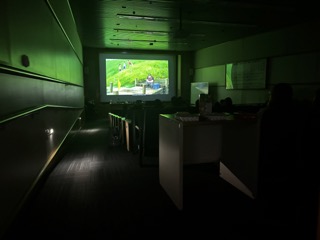
Key Points:
- Ithaca College hosted Hindustani (North Indian) classical musicians on Wednesday, March 7th.
- World-renowned artists Steve Gorn played the bansuri (bamboo flute) and Dibyarka Chatterjee played the tabla (hand drums).
- Listening to Indian classical music can reduce stress, relieve depression, and provide creative opportunities for self-expression.
Serene bansuri and tabla music floated out of Ithaca College’s Whalen Center for Music as world-renowned artists, Steve Gorn and Dubyarka Chatterjee, played North Indian classical music on Wednesday March 7.
The event, supported by IC’s Department of Anthropology, was attended by over 25 students, faculty, and staff.
Acclaimed Artists
Gorn has performed Hindustani classical music on the bansuri bamboo flute in concerts and festivals throughout the world for over 20 years.
“I’ve been playing for a long time and for me it’s a gateway to a mind-body feeling that just feels grounded and settled,” Gorn said.

Born into a musical family, Dibyarka Chatterjee began learning tabla when he was five years old. He said Indian classical music offers a spiritual experience for both the artist and the listener due to the focus and repetition involved in its composition.
“Just hearing the music repeated in a certain way would put the listener in a trance, but as the person playing the instrument focused on something so small and detailed you lose all sense of space and time,” Chatterjee said.

Melodious Music
The central concept in Indian classical music is of a melodic mode or raga, sung to a rhythmic cycle or tala. Gorn and Chatterjee performed three different ragas, ranging from slow to upbeat rhythms: Bhairagi Bhairav, Sudhsarang, and Bengali raga.
North Indian classical music dates back to 12th and 13th century BC. Since its inception it has been prescribed as a form of meditation called Nada-Yoga, which translates to “union through sound,” using music to connect to a higher state of consciousness.
It is “particularly powerful in therapeutic processes,” according to a Times of India interview with therapist Nigel Osborne. According to Osborne, the melodic modes and rhythms stimulate higher cognitive areas and the motor cortex, “encompassing the whole human evolution and the whole of our personal development.”
Studies show listening to Indian classical music can reduce stress, relieve depression, and provide creative opportunities for self-expression.
Event Experience
Associate professor and chair of the Department of Anthropology, Denise Nuttall, coordinated the performance as a part of her music labs that engage students experientially with the learning of South Asian rhythm and percussion.
Nuttall said she encourages students to “learn by doing:” she’s visited India for the past six years for her research, “A Biography of Tabla: Following the Masters,” in which she’s collected oral histories from learned and celebrated classical North Indian musicians. Now, Nutall continues to practice and perform table, returning to India every year which “has now become [her] second home.”
Senior cinematography and photography major, Sophia Foyer, is one of the students enrolled in Nuttall’s ethnomusicology class. Foyer’s learned the basics of the tabla and was excited to watch the performance.
“The music was so beautiful, I could imagine it just going on, it was very meditative and self-reflective,” Foyer said.
Angela Rudert, lecturer in the Department of Philosophy and Religion, was drawn to the session because of her keen interest and expertise in South Asia. Rudert said she felt it was a “great thing to do in the middle of a busy work day, because it almost felt like 45 minutes of meditation.”
“It was a really refreshing and renewing experience,” Rudert said.

